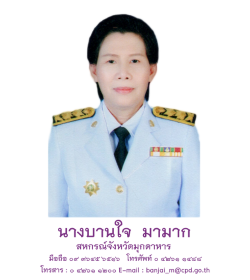×
ยินดีต้อนรับสู่ ฟอรัม Kunena!
อยากรู้จังเลยว่าคุณชอบอะไร รู้จักกับที่นี่ได้อย่างไร และสาเหตุจูงใจอะไรจึงลงทะเบียนเป็นสมาชิกกับทางเรา ช่วยแจ้งให้เราได้ทราบหน่อยได้ไหม
ยินดีต้อนรับสมาชิกใหม่ทุกท่าน และหวังว่าทางเราจะได้รับใช้คุณเยี่ยงนี้ตลอดไป
อยากรู้จังเลยว่าคุณชอบอะไร รู้จักกับที่นี่ได้อย่างไร และสาเหตุจูงใจอะไรจึงลงทะเบียนเป็นสมาชิกกับทางเรา ช่วยแจ้งให้เราได้ทราบหน่อยได้ไหม
ยินดีต้อนรับสมาชิกใหม่ทุกท่าน และหวังว่าทางเราจะได้รับใช้คุณเยี่ยงนี้ตลอดไป
скупка дронов
- Davidladdy
- Topic Author
- Visitor
-

3 weeks 5 days ago #2634921
by Davidladdy
Replied by Davidladdy on topic kraken магазин
Where did Yemeni coffee shops come from?
kraken darknet onion
In the Middle East, coffee isn’t a grab-and-go drink used to wake up with, but a social exchange. While coffee beans originated in Ethiopia, the earliest evidence of cultivation appeared in Yemen through trading across the Red Sea.
kraken2trfqodidvlh4aa337cpzfrhdlfldhve5nf7njhumwr7insta.cc
kra13.at
The practice followed into the early 20th century and across the world, when the first wave of Middle Eastern immigrants came to Detroit to work in the auto industry or shipping yards, Howell said. Most immigrants were men who migrated alone, so one of the first institutions they created were coffee houses where they would gather to socialize, share news about their home country, and even write letters back home. Many of the initial mosques in the area were originally established in the backs of the coffee houses.
Yemeni men working in shipping on the Great Lakes “would work for months at a time and then have a few weeks off and then work again,” leaving them unable to visit their families back in Yemen, Howell said. “The coffee houses in the Detroit area were a really important institution.”
“Our mission is to bring everyone in one place and share history,” Ibrahim Alhasbani, founder of the first contemporary Yemeni coffee chain Qahwah House, told CNN. “That’s why we serve the coffee in a pot. People come inside the store and they share one pot and they can talk and they share different stories.”
A new chapter for Yemeni coffee
Contemporary chains are designed by a new demographic — the descendants of these immigrants who are bringing Yemeni coffee culture to the American mainstream.
The very first Qahwah Houses in Dearborn were airy and upscale, a familiar setting to patrons of established coffee chains. But they also brought with them Yemeni culture, with coffee beans imported from local farmers, artifacts from the region and the founder’s family tree on the wall.
kraken darknet onion
In the Middle East, coffee isn’t a grab-and-go drink used to wake up with, but a social exchange. While coffee beans originated in Ethiopia, the earliest evidence of cultivation appeared in Yemen through trading across the Red Sea.
kraken2trfqodidvlh4aa337cpzfrhdlfldhve5nf7njhumwr7insta.cc
kra13.at
The practice followed into the early 20th century and across the world, when the first wave of Middle Eastern immigrants came to Detroit to work in the auto industry or shipping yards, Howell said. Most immigrants were men who migrated alone, so one of the first institutions they created were coffee houses where they would gather to socialize, share news about their home country, and even write letters back home. Many of the initial mosques in the area were originally established in the backs of the coffee houses.
Yemeni men working in shipping on the Great Lakes “would work for months at a time and then have a few weeks off and then work again,” leaving them unable to visit their families back in Yemen, Howell said. “The coffee houses in the Detroit area were a really important institution.”
“Our mission is to bring everyone in one place and share history,” Ibrahim Alhasbani, founder of the first contemporary Yemeni coffee chain Qahwah House, told CNN. “That’s why we serve the coffee in a pot. People come inside the store and they share one pot and they can talk and they share different stories.”
A new chapter for Yemeni coffee
Contemporary chains are designed by a new demographic — the descendants of these immigrants who are bringing Yemeni coffee culture to the American mainstream.
The very first Qahwah Houses in Dearborn were airy and upscale, a familiar setting to patrons of established coffee chains. But they also brought with them Yemeni culture, with coffee beans imported from local farmers, artifacts from the region and the founder’s family tree on the wall.
Reply to Davidladdy
- JamesTaulp
- Topic Author
- Visitor
-

3 weeks 5 days ago #2634962
by JamesTaulp
Replied by JamesTaulp on topic kraken войти
Scientists say skeletal remains found in castle well belong to figure from 800-year-old saga
kraken shop
Researchers have connected the identity of skeletal remains found in a well at Norway’s Sverresborg castle to a passage in a centuries-old Norse text.
The 800-year-old Sverris saga, which follows the story of the real-life King Sverre Sigurdsson, includes the tossing of the body of a dead man — later known as “Well-man” — down a well during a military raid in central Norway in 1197.
krmp12.cc
kraken2trfqodidvlh4aa337cpzfrhdlfldhve5nf7njhumwr7instad onion
It’s likely, according to the text, that raiders lobbed the body into the well to poison the main water source for locals, but little else is said about the man or who he was in the saga.
Researchers initially uncovered the bones in the castle’s well in 1938, but they were only able to carry out a visual analysis at the time. Now, scientists have an array of analytical techniques at their disposal, including genetic sequencing and radiocarbon dating.
A new study on the remains, published Friday in the Cell Press journal iScience, reveals unprecedented insights into Well-man’s appearance based on in-depth research on samples of his teeth.
“This is the first time that a person described in these historical texts has actually been found,” said study coauthor Michael D. Martin, a professor in the department of natural history at the Norwegian University of Science and Technology’s University Museum in Trondheim, in a statement.
“There are a lot of these medieval and ancient remains all around Europe, and they’re increasingly being studied using genomic methods.”
The findings not only shed fresh light on what Well-man looked like but also who he was, with a surprising twist about how he ended up in a Norse saga.
kraken shop
Researchers have connected the identity of skeletal remains found in a well at Norway’s Sverresborg castle to a passage in a centuries-old Norse text.
The 800-year-old Sverris saga, which follows the story of the real-life King Sverre Sigurdsson, includes the tossing of the body of a dead man — later known as “Well-man” — down a well during a military raid in central Norway in 1197.
krmp12.cc
kraken2trfqodidvlh4aa337cpzfrhdlfldhve5nf7njhumwr7instad onion
It’s likely, according to the text, that raiders lobbed the body into the well to poison the main water source for locals, but little else is said about the man or who he was in the saga.
Researchers initially uncovered the bones in the castle’s well in 1938, but they were only able to carry out a visual analysis at the time. Now, scientists have an array of analytical techniques at their disposal, including genetic sequencing and radiocarbon dating.
A new study on the remains, published Friday in the Cell Press journal iScience, reveals unprecedented insights into Well-man’s appearance based on in-depth research on samples of his teeth.
“This is the first time that a person described in these historical texts has actually been found,” said study coauthor Michael D. Martin, a professor in the department of natural history at the Norwegian University of Science and Technology’s University Museum in Trondheim, in a statement.
“There are a lot of these medieval and ancient remains all around Europe, and they’re increasingly being studied using genomic methods.”
The findings not only shed fresh light on what Well-man looked like but also who he was, with a surprising twist about how he ended up in a Norse saga.
Reply to JamesTaulp
- Charlesped
- Topic Author
- Visitor
-

3 weeks 5 days ago #2634963
by Charlesped
Replied by Charlesped on topic Площадка кракен
He served with the US Army in Iraq. Now he’s one of Asia’s top chefs and a Netflix ‘Culinary Class Wars’ judge
kraken сайт
From a warzone in Iraq to a Michelin-starred kitchen and a hit Netflix show, chef Sung Anh’s path to the top of Asia’s fine dining scene has been anything but ordinary.
“Just like I did in the US Army, where I volunteered to go to the war, wanting to do something different — I decided to come here to Korea to try something different,” says the Korean-American chef and judge on hit reality cooking show “Culinary Class Wars,” which has just been green-lit for a second season.
kra012.cc
kra12 cc
Sung, 42, is the head chef and owner of South Korea’s only three-Michelin-starred restaurant, Mosu Seoul. In recent weeks, he has gained a new legion of fans as the meticulous and straight-talking judge on the new Netflix series. It’s this passion and unwavering drive to forge his own path that’s helped reshape fine dining in his birth home.
Born in Seoul, South Korea’s capital, Sung and his family emigrated to San Diego, California when he was 13.
“We were just a family from Korea, seeking the American Dream,” he says. “As an immigrant family, we didn’t really know English.”
As a teen growing up on the US West Coast, his mind couldn’t have been further from cooking.
“I went to school, got into college, but decided to join the US Army because that’s the only way I thought I could travel,” says the chef.
Over four years of service, he trained in bases across the country, before being deployed to his country of birth, South Korea and — following 9/11 — to the Middle East.
kraken сайт
From a warzone in Iraq to a Michelin-starred kitchen and a hit Netflix show, chef Sung Anh’s path to the top of Asia’s fine dining scene has been anything but ordinary.
“Just like I did in the US Army, where I volunteered to go to the war, wanting to do something different — I decided to come here to Korea to try something different,” says the Korean-American chef and judge on hit reality cooking show “Culinary Class Wars,” which has just been green-lit for a second season.
kra012.cc
kra12 cc
Sung, 42, is the head chef and owner of South Korea’s only three-Michelin-starred restaurant, Mosu Seoul. In recent weeks, he has gained a new legion of fans as the meticulous and straight-talking judge on the new Netflix series. It’s this passion and unwavering drive to forge his own path that’s helped reshape fine dining in his birth home.
Born in Seoul, South Korea’s capital, Sung and his family emigrated to San Diego, California when he was 13.
“We were just a family from Korea, seeking the American Dream,” he says. “As an immigrant family, we didn’t really know English.”
As a teen growing up on the US West Coast, his mind couldn’t have been further from cooking.
“I went to school, got into college, but decided to join the US Army because that’s the only way I thought I could travel,” says the chef.
Over four years of service, he trained in bases across the country, before being deployed to his country of birth, South Korea and — following 9/11 — to the Middle East.
Reply to Charlesped
- StephenReavy
- Topic Author
- Visitor
-

3 weeks 5 days ago #2634965
by StephenReavy
Replied by StephenReavy on topic kraken ссылка
This teen became the youngest person to summit the world’s highest peaks. Now he wants others to follow in his footsteps
kra12.cc
Nima Rinji Sherpa’s ears are still tinged black from wind chill, an occupational hazard of climbing to heights where humans struggle to breathe, and where the weather can turn deadly in an instant.
This month, Nima became the youngest person to summit all 14 of the world’s highest peaks, but the 18-year-old Nepalese mountaineer is already getting ready for his next big feat.
krmp12.cc
kraken market
Speaking to CNN via video call from the Nepali capital Kathmandu last week, Nima said he’s taking a couple weeks’ rest before preparing to climb the world’s eighth-highest mountain, Manaslu, with Italian mountaineer Simone Moro – in winter, alpine-style.
“That means we’re climbing an 8,000-meter mountain in winter… There’s no fixed ropes for us, there’s no (supplemental) oxygen for us, there is no support for us. So, it’s like pure human endurance,” Nima said. “It has never been done in the history of mountaineering.”
After that, “I’ll take some rest,” Nima laughed.
On October 9, Nima reached the top of the 8,027-meter (26,335-foot) Shishapangma along with his partner Pasang Nurbu Sherpa. For Nima, it was the final of the “eight-thousanders,” the 14 peaks recognized by the International Climbing and Mountaineering Federation as standing more than 8,000 meters above sea level.
Describing the moment of summiting the final peak as “pure joy,” Nima said his motivation comes from his family, many of whom are renowned mountaineers.
His father, Tashi Lakpa Sherpa, has climbed Everest nine times, and at age 19 became the youngest person to summit without bottled oxygen. His uncle Mingma Sherpa became the first South Asian climber to summit the 14 peaks in 2011.
“My uncles and my father, they are way more successful than I would ever be because they came from a very small village. To even dream about being this successful, for them it was really hard,” Nima said. “I have the privilege that they didn’t have.”
kra12.cc
Nima Rinji Sherpa’s ears are still tinged black from wind chill, an occupational hazard of climbing to heights where humans struggle to breathe, and where the weather can turn deadly in an instant.
This month, Nima became the youngest person to summit all 14 of the world’s highest peaks, but the 18-year-old Nepalese mountaineer is already getting ready for his next big feat.
krmp12.cc
kraken market
Speaking to CNN via video call from the Nepali capital Kathmandu last week, Nima said he’s taking a couple weeks’ rest before preparing to climb the world’s eighth-highest mountain, Manaslu, with Italian mountaineer Simone Moro – in winter, alpine-style.
“That means we’re climbing an 8,000-meter mountain in winter… There’s no fixed ropes for us, there’s no (supplemental) oxygen for us, there is no support for us. So, it’s like pure human endurance,” Nima said. “It has never been done in the history of mountaineering.”
After that, “I’ll take some rest,” Nima laughed.
On October 9, Nima reached the top of the 8,027-meter (26,335-foot) Shishapangma along with his partner Pasang Nurbu Sherpa. For Nima, it was the final of the “eight-thousanders,” the 14 peaks recognized by the International Climbing and Mountaineering Federation as standing more than 8,000 meters above sea level.
Describing the moment of summiting the final peak as “pure joy,” Nima said his motivation comes from his family, many of whom are renowned mountaineers.
His father, Tashi Lakpa Sherpa, has climbed Everest nine times, and at age 19 became the youngest person to summit without bottled oxygen. His uncle Mingma Sherpa became the first South Asian climber to summit the 14 peaks in 2011.
“My uncles and my father, they are way more successful than I would ever be because they came from a very small village. To even dream about being this successful, for them it was really hard,” Nima said. “I have the privilege that they didn’t have.”
Reply to StephenReavy
- AdolfoWealp
- Topic Author
- Visitor
-

3 weeks 5 days ago #2635044
by AdolfoWealp
Replied by AdolfoWealp on topic kra13 cc
Tiny house with elaborate – and erotic – frescoes unearthed at Pompeii
kra12.cc
Archaeologists have uncovered a tiny house in Pompeii that is filled with elaborate – and sometimes erotic – frescoes, further revealing the ornate way in which Romans decorated their homes.
Situated in the central district of the ancient city, the house is smaller than normal and unusually lacks the open central courtyard – known as an atrium – that is typical of Roman architecture, the Archaeological Park of Pompeii, which oversees the site, said in a statement Thursday.
krmp12.cc
kraken сайт
This change could have occurred due to shifting trends in Roman - and particularly Pompeian - society, during the first century AD, archaeologists said.
Pompeii was destroyed by the eruption of Mount Vesuvius in AD 79 when its buildings and thousands of inhabitants were buried beneath layers of ash and pumice. This coating perfectly preserved the city for millennia, making it one of the most important archaeological sites in the world as it offers an unprecedented insight into Roman daily life.
This latest discovery spotlights the ornate decorations that rich Romans enjoyed in their homes – several frescoes depict mythical scenes and others are decorated with plant and animal motifs on a white background.
One small square painting set against a blue-painted wall depicts intercourse between a satyr and a nymph, while another shows Hippolytus, son of the mythical Greek king Theseus, and his stepmother Phaedra who fell in love with him before killing herself when he rejected her in disgust.
kra12.cc
Archaeologists have uncovered a tiny house in Pompeii that is filled with elaborate – and sometimes erotic – frescoes, further revealing the ornate way in which Romans decorated their homes.
Situated in the central district of the ancient city, the house is smaller than normal and unusually lacks the open central courtyard – known as an atrium – that is typical of Roman architecture, the Archaeological Park of Pompeii, which oversees the site, said in a statement Thursday.
krmp12.cc
kraken сайт
This change could have occurred due to shifting trends in Roman - and particularly Pompeian - society, during the first century AD, archaeologists said.
Pompeii was destroyed by the eruption of Mount Vesuvius in AD 79 when its buildings and thousands of inhabitants were buried beneath layers of ash and pumice. This coating perfectly preserved the city for millennia, making it one of the most important archaeological sites in the world as it offers an unprecedented insight into Roman daily life.
This latest discovery spotlights the ornate decorations that rich Romans enjoyed in their homes – several frescoes depict mythical scenes and others are decorated with plant and animal motifs on a white background.
One small square painting set against a blue-painted wall depicts intercourse between a satyr and a nymph, while another shows Hippolytus, son of the mythical Greek king Theseus, and his stepmother Phaedra who fell in love with him before killing herself when he rejected her in disgust.
Reply to AdolfoWealp
- DonaldTax
- Topic Author
- Visitor
-

3 weeks 5 days ago #2635045
by DonaldTax
Replied by DonaldTax on topic кракен
He served with the US Army in Iraq. Now he’s one of Asia’s top chefs and a Netflix ‘Culinary Class Wars’ judge
kra12 cc
From a warzone in Iraq to a Michelin-starred kitchen and a hit Netflix show, chef Sung Anh’s path to the top of Asia’s fine dining scene has been anything but ordinary.
“Just like I did in the US Army, where I volunteered to go to the war, wanting to do something different — I decided to come here to Korea to try something different,” says the Korean-American chef and judge on hit reality cooking show “Culinary Class Wars,” which has just been green-lit for a second season.
kra012.cc
kraken зеркало
Sung, 42, is the head chef and owner of South Korea’s only three-Michelin-starred restaurant, Mosu Seoul. In recent weeks, he has gained a new legion of fans as the meticulous and straight-talking judge on the new Netflix series. It’s this passion and unwavering drive to forge his own path that’s helped reshape fine dining in his birth home.
Born in Seoul, South Korea’s capital, Sung and his family emigrated to San Diego, California when he was 13.
“We were just a family from Korea, seeking the American Dream,” he says. “As an immigrant family, we didn’t really know English.”
As a teen growing up on the US West Coast, his mind couldn’t have been further from cooking.
“I went to school, got into college, but decided to join the US Army because that’s the only way I thought I could travel,” says the chef.
Over four years of service, he trained in bases across the country, before being deployed to his country of birth, South Korea and — following 9/11 — to the Middle East.
kra12 cc
From a warzone in Iraq to a Michelin-starred kitchen and a hit Netflix show, chef Sung Anh’s path to the top of Asia’s fine dining scene has been anything but ordinary.
“Just like I did in the US Army, where I volunteered to go to the war, wanting to do something different — I decided to come here to Korea to try something different,” says the Korean-American chef and judge on hit reality cooking show “Culinary Class Wars,” which has just been green-lit for a second season.
kra012.cc
kraken зеркало
Sung, 42, is the head chef and owner of South Korea’s only three-Michelin-starred restaurant, Mosu Seoul. In recent weeks, he has gained a new legion of fans as the meticulous and straight-talking judge on the new Netflix series. It’s this passion and unwavering drive to forge his own path that’s helped reshape fine dining in his birth home.
Born in Seoul, South Korea’s capital, Sung and his family emigrated to San Diego, California when he was 13.
“We were just a family from Korea, seeking the American Dream,” he says. “As an immigrant family, we didn’t really know English.”
As a teen growing up on the US West Coast, his mind couldn’t have been further from cooking.
“I went to school, got into college, but decided to join the US Army because that’s the only way I thought I could travel,” says the chef.
Over four years of service, he trained in bases across the country, before being deployed to his country of birth, South Korea and — following 9/11 — to the Middle East.
Reply to DonaldTax
Time to create page: 3.510 seconds












